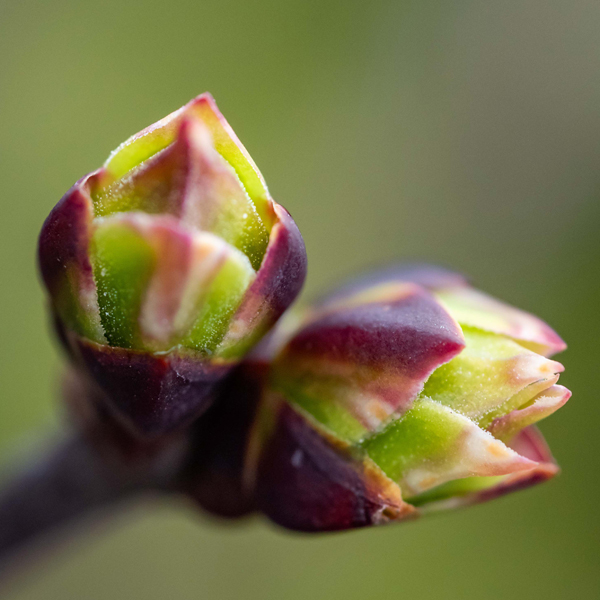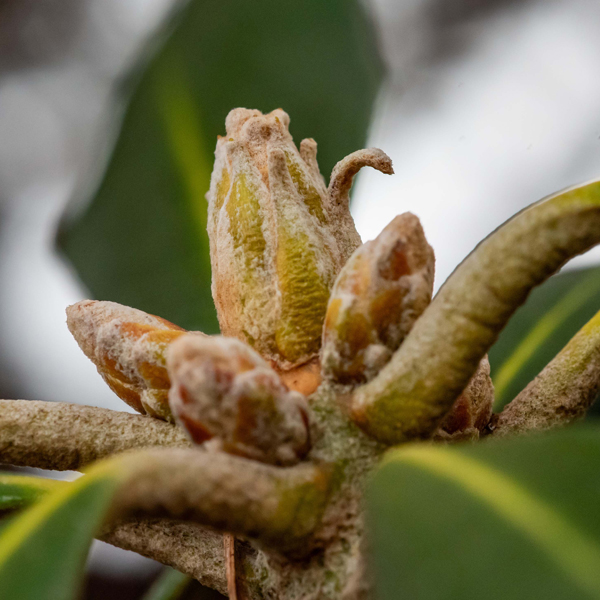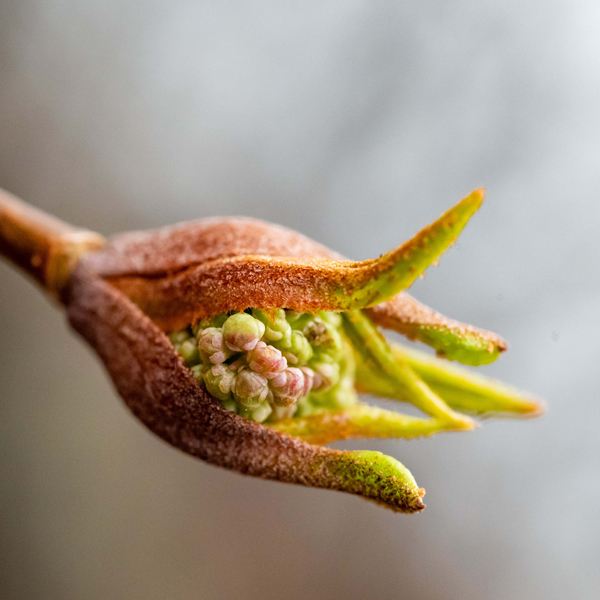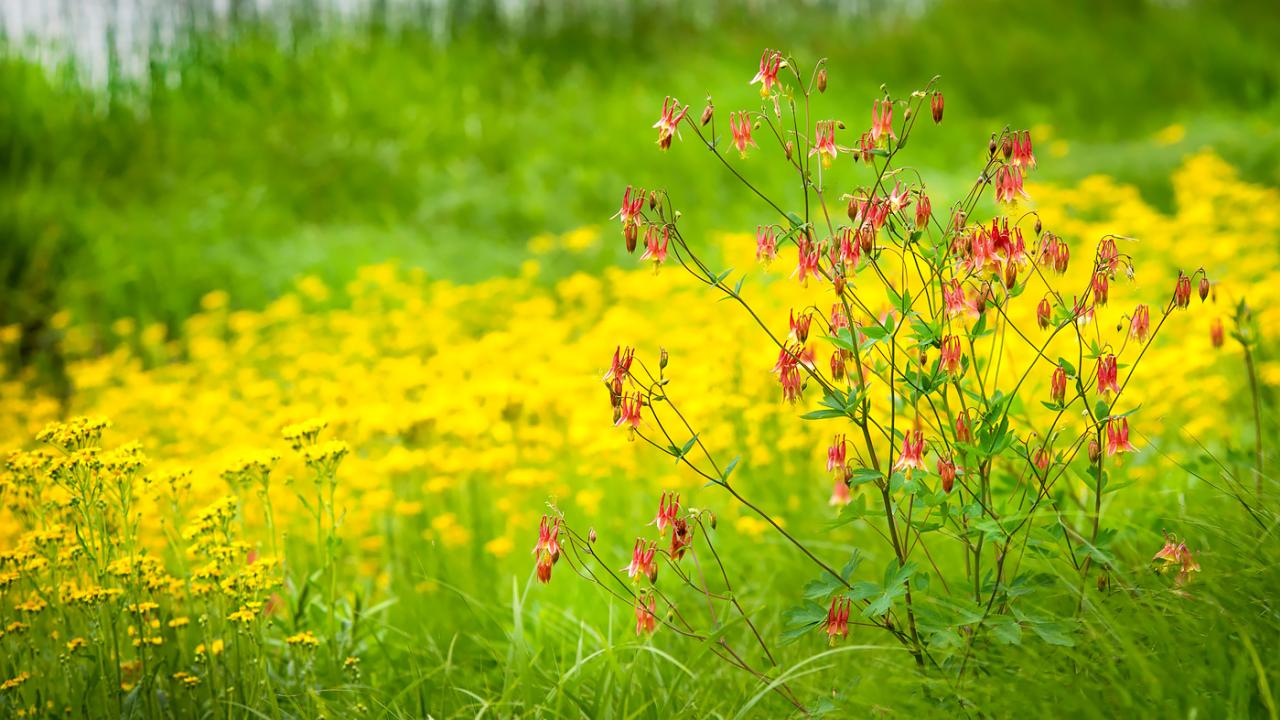

Plant Science &
Conservation
Garden Stories
Weather Whiplash
Is it Spring or Winter? Flowers Wage Their Bets
As if on cue, tiny green leaves peek out from the dark soil each spring, reaching for the sun.
But how do flowers know it’s spring? And can they detect real spring versus a warm spell when it’s still winter?
“Within the context of ‘reasonable conditions’ plants are generally able to detect real spring from a false start,” said Paul CaraDonna, Ph.D., a Chicago Botanic Garden conservation scientist. “It is important to keep in mind that plants have long dealt with variable and unpredictable environments. How they make a living right now is based on figuring that out over thousands of years.”
“Figuring that out” is at once complex and mysterious.
Plants sense the arrival of spring through photoperiod sensing, moisture, temperature cues, chilling requirements, and chemical signaling. As scientists continue to explore these complex mechanisms, recent breakthroughs stand out.
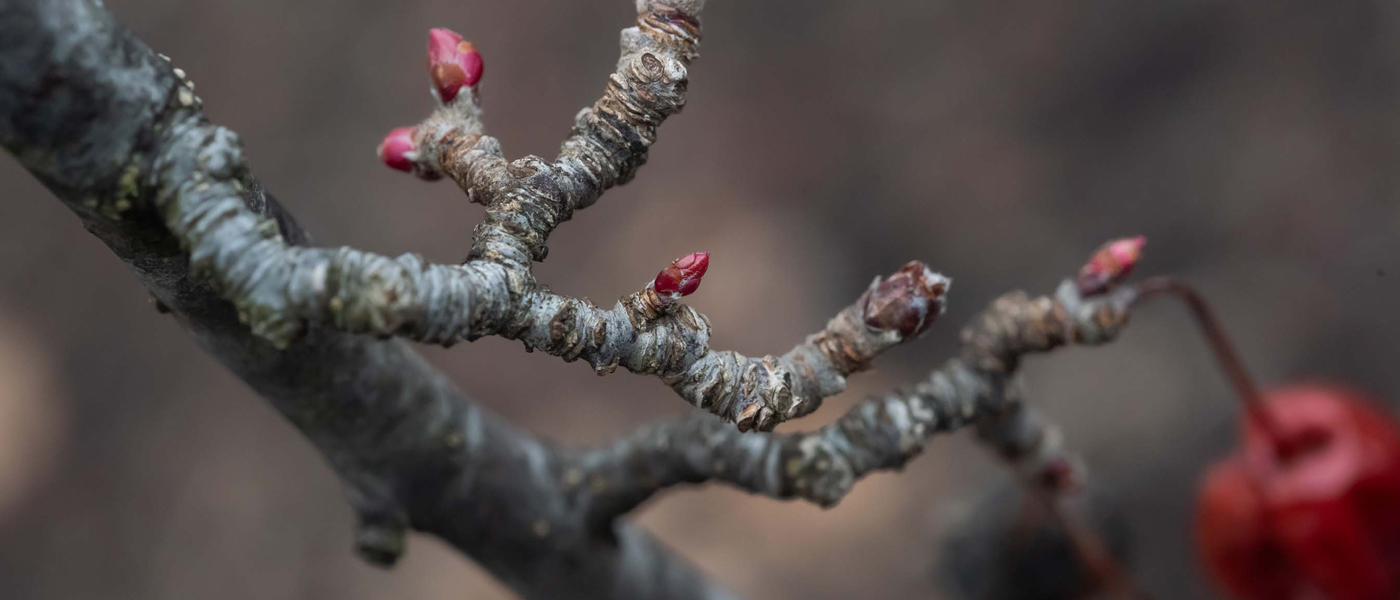
Crabapple (Malus ‘Adams’)
Plant “thermometer” discovered
Unlike animals, plants lack a nervous system, but they have evolved sophisticated means to sense and respond to temperature changes.
An international team of scientists recently discovered a “thermometer” molecule in plants that can measure the temperature of the soil around them, which triggers spring budding, according to a 2016 study published in the journal Science.
Stems act like fiber optic cables
Plants also rely on light to schedule their spring waking. Photoreceptors (protein molecules) on leaves and stems can detect the duration of daylight and darkness.
A remarkable recent discovery found that some plant stems act like fiber optic cables by guiding light underground to their roots so they can grow, according to a 2023 study published in Science Signaling. (Humans rely on fiber optic cables—made from plastic or glass—to send data across the world at lightning speed through beams of light.)
About that whiplash weather
February 2024 is on record as the warmest ever recorded in Chicago and as the highest global average temperature in history for that month. At the Garden, it was in the 60s one day and snowing the next. It’s no wonder that buds started popping; some may regret it.
“The plants that placed their bets on a few unusually warm days may likely face harsh consequences like reproductive failure, loss of biomass, or even plant death,” CaraDonna said. “Climate change is really shaking things up beyond the ‘reasonable conditions’ plants are used to such that they might start to get fooled.”
And They’re Off
These plants got a jump on spring
Unseasonably warm days have coaxed snowdrops, winter aconites, and crocuses to bloom earlier than usual. It’s been so warm that Chicago Botanic Garden staff opened some greenhouse roofs a month early to let the heat escape—the first time that’s ever happened in February, according to Tim Pollak, manager of plant production.
Chicago—and the world—documented its warmest ever February on record. Should we be concerned about the swelling buds on trees, flowers, and shrubs?
“It’s really weird and really early for this kind of weather. One day it was 65 degrees [Fahrenheit] and the next day it snowed,” said Chris Henning, display garden manager. “But for a lot of early flowering plants like tulips and daffodils, it’s not really a big deal.”
Pollack said tulips and crabapple trees will bloom much earlier this year, so Garden visitors accustomed to visiting at a certain time in May or early June to see them might be surprised to find that they are done blooming. The crabapple flowers may also be damaged from late freezes when they finally open and that may affect the display, Pollack said.
The unusual heat teased maple trees to flower. Forsythias and lilacs may bloom earlier this year, too. That could be a problem when there’s a freeze—something that can occur up to the week of April 22.
“There are lots of swelling buds right now. Lilacs were rather large. Maples were pretty much already starting to flower. Rhododendrons, viburnums, and witch hazels as well,” Henning said. “Most of the usual culprits, just really early this year."
Magnolias, too, are starting to drop their bud scales—that protective fuzzy coating around the flowers, which could result in some damage to the petal tips when the flowers open, Henning said.
For some tender plants, he said, “A strong cold spell when the plant is leafing out could cause enough damage that it doesn’t recover.”
But this winter might be an outlier, he explained. “One year of extreme winter—like the polar vortex—is not a big deal, but if it keeps happening it could have a long-term consequence, but I don’t think we’ll see long-term repercussions this year. Most plants are resilient.”
Stay tuned.
Carolyn Starks, Director, Content and Editorial
Nina Koziol is a garden writer and horticulturist who lives and gardens in Palos Park, Illinois.


